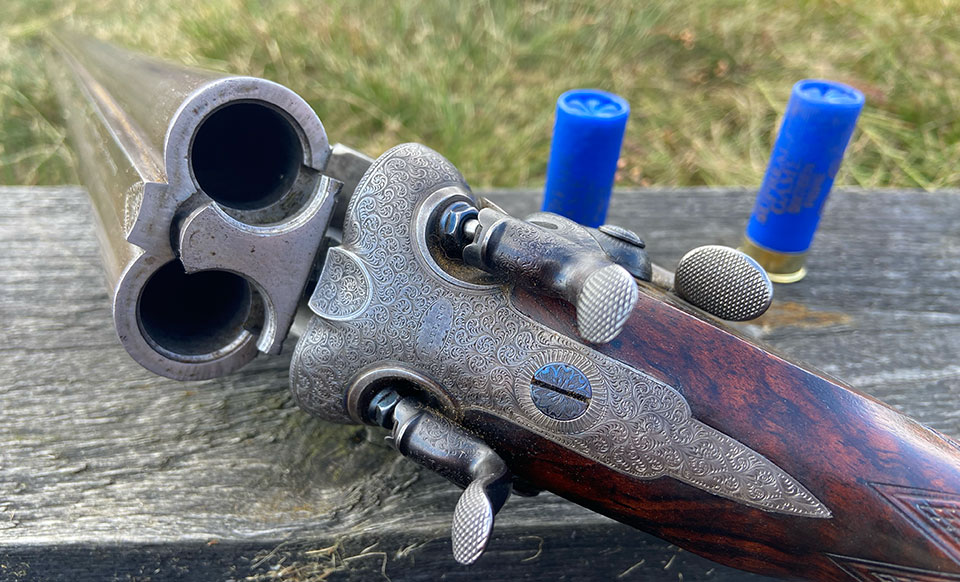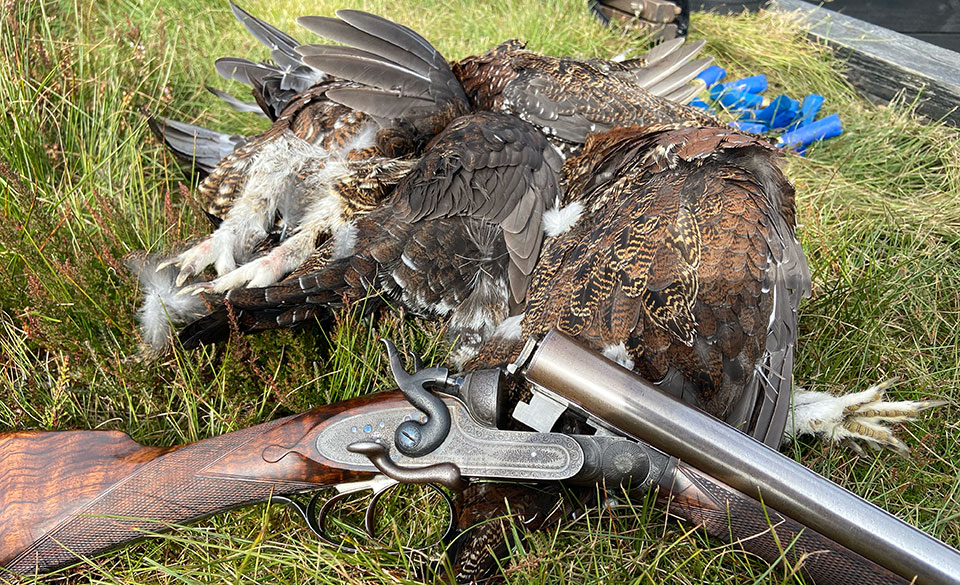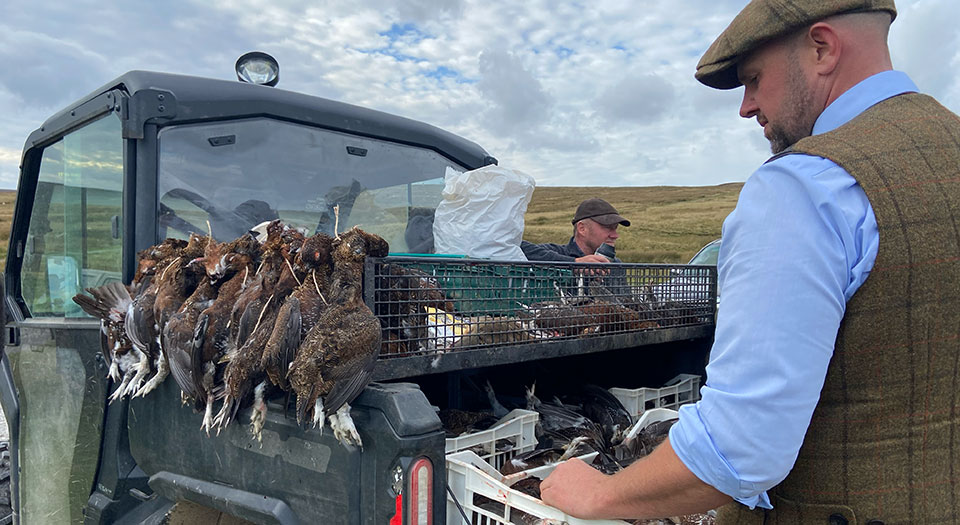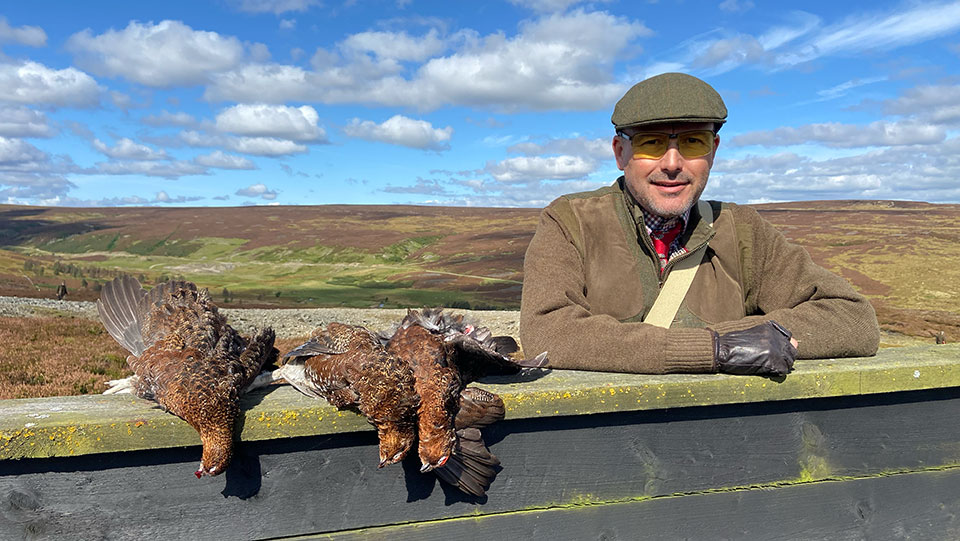Grouse are hard work.
Reports from the moors are downbeat as we approach the start of the 2024 grouse shooting season, which kicks off, as always, on the ‘Glorious Twelfth’ of August.

The grouse has always been a high status game bird; even parliamentary breaks are reputed to have been timed to allow MPs to get out of town and into the butts ready for the sporting highlight of the year.
Of course, not all MPs shoot grouse these days (‘though quite a few still do) but the bird remains a topic of discussion in the national newspapers and on-line.
Now fox hunting with a pack of hounds has been banned, anti-country sports agitators have turned their attention to grouse shooting, which they consider an out-dated and class-discriminatory pursuit.

To support their instinctive dislike of grouse shooting and grouse shooters, they have brought all manner of scurrilous accusations to bear, none of which stand up to even the most cursory scrutiny.
However, they have had some success in persuading land owners (many moors are owned by water companies) to stop renewing the grouse shooting leases, for fear of persecution and social media shaming.
For chefs, the red grouse is a rare and rich delicacy, available for only a short time and hard to source, as few will ever see it on the list of meats available from the average supplier.
The bird is unique to these islands. It cannot be bred in captivity and released and it has even proven close to impossible to move grouse from one moor to another and re-establish good populations.
The fact that we have a shootable surplus of a native game bird, which is purely wild-born and bred should be a source of pride. It is a conservation success we should celebrate, not deride. Shooting is a key part of the success of the species.
The reason is that grouse are susceptible to disease and parasite infestation. If numbers get too high, the grouse get infected and there is a mass die-off. The population then takes decades to recover, if it does indeed recover. There are plenty of moors on which grouse no longer exist.
By shooting off the surplus and the older birds, those remaining as breeding stock have far greater levels of success and the flocks remain healthier for longer. The moors with the most grouse are those on which grouse are regularly shot.
Maintaining a grouse moor is very tough and very expensive. Muir burn is an ancient method of burning-off the woody, old heather in controlled strip-burning. By doing so, a lot of combustible material is safely removed from the moor and new growth is promoted. Grouse feed on the shoots of the young heather plant.

The massive fires we have witnessed on moors in recent years have been a result of policies of mis-management in which muir burn is not carried out. A tinder-dry moor that is full of old-growth woody stems will burn uncontrollably when a heat-wave provides the right conditions for ignition.
As ground nesting birds, grouse are vulnerable to four-legged predators, like stoats, weasels, rats and foxes, as well as avian predators, such as crows and magpies, which will systematically strip an area of both eggs and chicks.
grouse benefit form this policy; so do curlew, hen harriers, merlin,
Game keepers spend a lot of time trapping the predators and keeping the levels of egg-thievery and chick-killing as low as possible. Not only grouse benefit form this policy; so do curlew, hen harriers, merlin, black cock and other at-risk species.
An example of a moor’s decline when grouse shooting was removed are the Berwyn Mountains in Wales. Since shooting was banned in 1990, populations of red grouse, golden plover, curlew, lapwing, redshank and black grouse have all declined to the point of local extinction in some cases.
However, despite the efforts of ‘keepers and shoot owners, the weather can also cause havoc to grouse breeding. A cold, wet spring and early summer, as we had this year, can devastate the survival chances of the chicks.
In such years, all the expense of maintaining the habitat and protecting the birds yields no shooting, so none of the costs can be reclaimed. It is not unusual or only four or five years in every decade to produce a significant shootable surplus. Yet, the costs remain the same. No wonder grouse shooting is such an expensive endeavour!
The grouse itself is a fantastic, characterful bird, it flies very fast, hugging the ground contours and testing even the best shots in the country. It is very compact, and heavier than it looks, with huge chest muscles powering those wings to produce the explosive power it needs to gain speed.

Grouse meat is very dark, almost resembling aged filet steak in colour and texture. It is soft and flavourful, yet largely unknown to the general public.
The grouse is the undisputed king of our game birds and should be treated as royalty on the plate, as well as on the wing.
Published by Vintage Guns Ltd on



